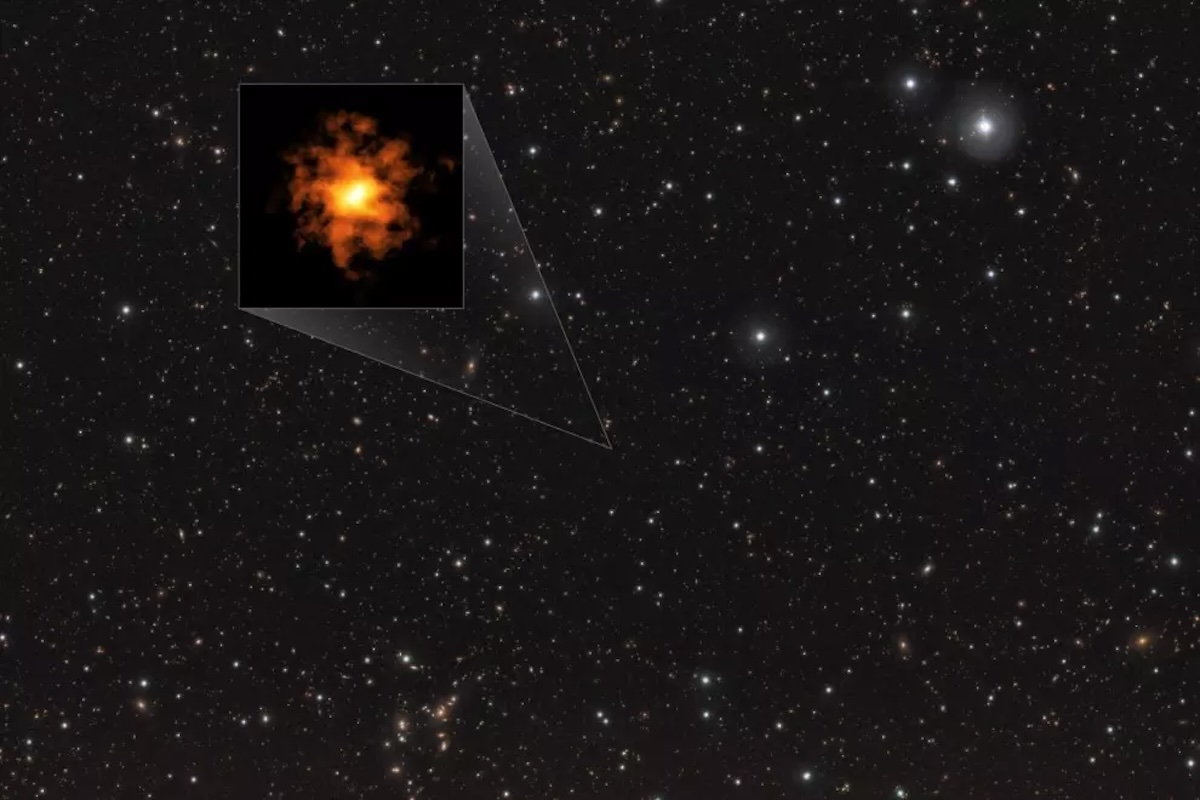The most distant and oldest spiral galaxy discovered

Researchers have discovered the most distant Milky Way-like galaxy ever observed
This disk-shaped galaxy, called REBELS-25, appears as orderly as modern galaxies, but we see it as it was when the universe was just 700 million years old. This is surprising because, based on our current knowledge of galaxy formation, these early galaxies are expected to appear more chaotic. The rotation and structure of REBELS-25 were revealed by the Atacama Large Millimeter/submillimeter Array (ALMA), in which the European Southern Observatory (ESO) is collaborating.
The galaxies we see today have come a long way from their chaotic, disordered counterparts that astronomers commonly observed in the early Universe. “Based on our understanding of galaxy formation, we expect most early galaxies to be small and disorderly in appearance,” says Jacqueline Hodge, an astronomer at Leiden University in the Netherlands and co-author of the study.
These early, disordered galaxies merge with each other and evolve into smoother forms at an incredibly slow rate. Current theories suggest that billions of years of evolution must have occurred for a galaxy to become as ordered as our Milky Way—a rotating disk with ordered structures like spiral arms. However, the discovery of REBELS-25 calls this time scale into question.
In a study accepted for publication in the Monthly Notices of the Royal Astronomical Society, astronomers found that REBELS-25 is the most distant rotating disk galaxy ever discovered. The light that reached us from this galaxy was emitted when the Universe was just 700 million years old—just five percent of its current age (13.8 billion)—making REBELS-25’s orderly rotation surprising. “The observation of a galaxy so similar to our Milky Way, which is strongly dominated by rotation, challenges our understanding of how quickly galaxies in the early universe evolve into the orderly galaxies of today’s cosmos,” says Lucy Rowland, a graduate student at Leiden University. and first author of the study.
REBELS-25 was originally discovered from previous observations by the same team, also made with ALMA, located in the Chilean Atacama Desert. This was an exciting discovery at the time because it showed evidence of rotation, but the resolution of the data was not high enough to be sure. To properly understand the galaxy’s structure and motion, the team conducted follow-up observations with higher resolution ALMA, confirming its record-breaking status. “ALMA is the only existing telescope with the sensitivity and resolution needed to achieve this goal,” says Renske Smith, a researcher at Liverpool John Moores University in the UK and co-author of the study.
Surprisingly, the data also hints at more advanced features of the Milky Way, such as an elongated central band and even spiral arms, although more observations will be needed to confirm this. “Finding more evidence of more advanced structures would be an exciting discovery, as this would be the most distant galaxy with such structures observed to date,” Rowland says.
These future REBELS-25 observations, along with other discoveries of early rotating galaxies, could change our understanding of the formation of the first galaxies and the evolution of the Universe as a whole.
LINK
REBELS-25: Discovery of a dynamically cold disk galaxy at 𝑧 = 7.31.
Image: The REBELS-25 galaxy as seen by the Atacama Large Millimeter/submillimeter Array (ALMA), superimposed on an infrared image of other stars and galaxies. The infrared image was taken by ESO’s Visible and Infrared Survey Telescope for Astronomy (VISTA). In a recent study, scientists found evidence that REBELS-25 was a highly rotating disk galaxy that existed just 700 million years after the Big Bang. This makes it the most distant and ancient Milky Way-type galaxy known to date. Photo: ALMA (ESO/NAOJ/NRAO)/L. Rowland et al/ESO/J. Dunlop et al. Answer: CASU, CALET
